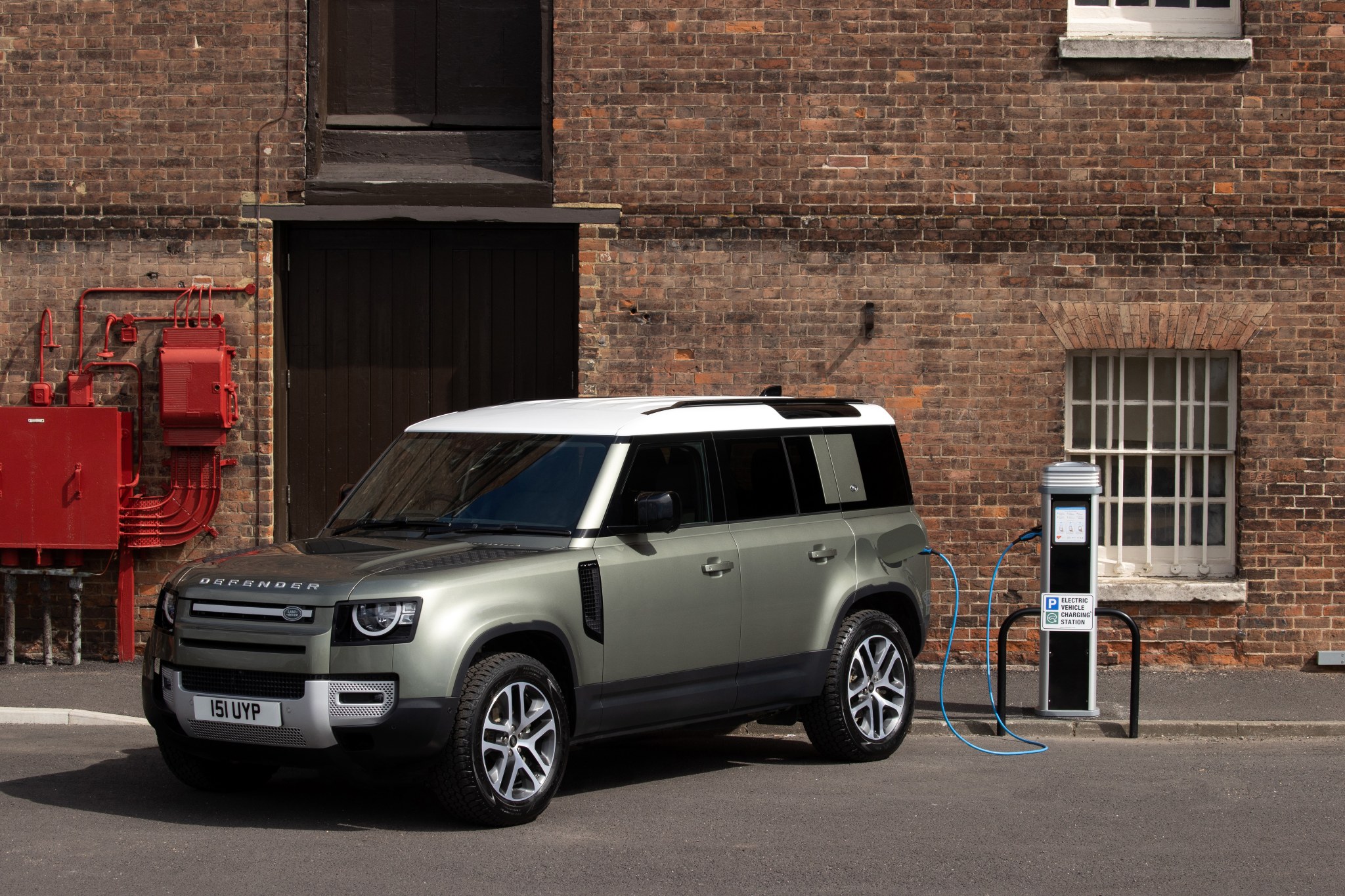Land Rover to develop Hydrogen Fuel Cell Defender
The Hydrogen Fuel Cell Defender will begin testing later in 2021
 The Hydrogen Fuel Cell Defender is part of Jaguar Land Rover's Reimagine Strategy (Pictured is the Defender PHEV)
The Hydrogen Fuel Cell Defender is part of Jaguar Land Rover's Reimagine Strategy (Pictured is the Defender PHEV)Land Rover has started development on a Hydrogen Fuel Cell Defender, which should not only give it zero tailpipe emissions and great off-road ability thanks to instant torque but should also combat range anxiety. The fuel-cell electric vehicle (FCEV) is part of Jaguar Land Rover’s Reimagine Strategy, through which Land Rover aims to launch six new pure electric vehicles and aims to fully electrify their range by the end of the decade. Land Rover is also aiming for the launch of its first pure electric vehicle by 2024. Earlier this year, Jaguar also announced its plans of electrifying its entire range and becoming an all-electric luxury brand by 2025.
 Originally known as the Land Rover Ninety, the Defender has been in production since 1983 (Pictured is the ICE-powered Defender)
Originally known as the Land Rover Ninety, the Defender has been in production since 1983 (Pictured is the ICE-powered Defender)Jaguar Land Rover announced its advanced engineering programme known as Project Zeus, which will help engineers understand how to optimise a hydrogen powertrain to deliver the expected levels of performance. To develop the Defender-based FCEV, Jaguar Land Rover has collaborated with multiple firms such as AVL, Delta Motorsport, Marelli Automotive Systems, and the UK Battery Industrialisation Centre. With Project Zeus, Jaguar Land Rover is aiming to achieve zero tailpipe emissions by the year 2036, and also become a net-zero carbon business by 2039. Jaguar Land Rover is aiming to commence testing of the prototype later in 2021 in the UK.
 Land Rover aims to achieve zero tailpipe emissions by 2036 (Pictured is the PHEV Defender)
Land Rover aims to achieve zero tailpipe emissions by 2036 (Pictured is the PHEV Defender) Why hydrogen? Well, the process of ‘recharging’ a hydrogen fuel cell vehicle is not too different from refueling a regular ICE-powered car. One can simply plug in the nozzle to refuel their hydrogen fuel cell vehicle. Unlike traditional electric vehicles which take an hour for a full charge, a full tank of refueling hydrogen will take just around 3 to 5 minutes and also offer a better driving range of approximately 300 to 600 kilometres.
 The Defender comes equipped with active air suspension (Pictured is the ICE-powered Defender)
The Defender comes equipped with active air suspension (Pictured is the ICE-powered Defender)While Toyota may have started the push for cleaner vehicles with examples like the Prius Hybrid and the Mirai FCEV, it is good to see luxury brands like Jaguar Land Rover take steps to adapt to a cleaner, gasoline-free future.


